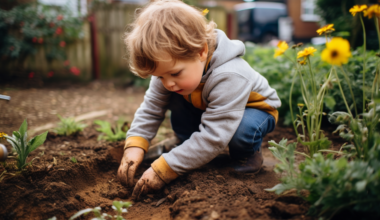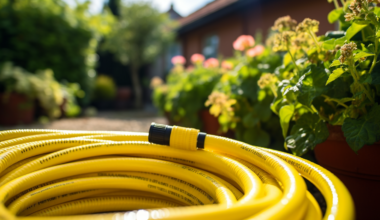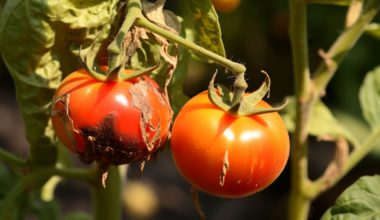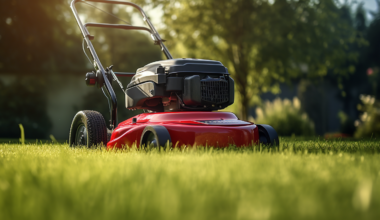Maintaining a healthy garden goes beyond just watering and fertilizing your plants. Practicing good garden hygiene is a crucial aspect of successful gardening. By incorporating proper hygiene practices, you can prevent the spread of diseases, control pests, and create an optimal environment for your plants to thrive.
In this comprehensive guide, we will explore essential tips and techniques for practicing good garden hygiene. Whether you’re a novice gardener or an experienced green thumb, these practices will help you maintain a healthy and productive garden.
1. Start with Clean Tools
Clean and well-maintained garden tools are essential for good garden hygiene. Dirty tools can harbor pathogens and spread diseases from one plant to another. Follow these guidelines:
- Clean your tools after each use. Use a stiff brush or steel wool to remove dirt and debris.
- Disinfect your tools periodically. Soak them in a solution of one part bleach to nine parts water or use rubbing alcohol.
- Sharpen your cutting tools regularly to ensure clean and precise cuts, minimizing damage to plants.
2. Remove Plant Debris
Plant debris, such as fallen leaves, spent flowers, and dead stems, can provide a breeding ground for pests and diseases. Remove plant debris regularly to maintain a clean and healthy garden environment:
- Rake and collect fallen leaves and dispose of them properly.
- Prune dead or diseased branches to prevent the spread of pathogens.
- Remove spent flowers and cut back overgrown plants to promote airflow and reduce the risk of fungal diseases.
3. Weed Control
Weeds not only compete with your plants for resources but can also harbor pests and diseases. Implement effective weed control measures to maintain a tidy garden and prevent the spread of unwanted organisms:
- Regularly inspect your garden for weeds and remove them promptly, including their roots.
- Use mulch to suppress weed growth and conserve soil moisture.
- Consider using weed barriers or landscape fabric in areas prone to heavy weed infestation.
4. Proper Plant Spacing
Proper plant spacing is essential for good garden hygiene. Overcrowded plants can create a damp and shaded environment, leading to increased disease susceptibility. Follow these guidelines:
- Refer to the recommended spacing instructions for each plant to allow adequate airflow and sunlight penetration.
- Thin out seedlings as they grow to maintain the appropriate spacing between plants.
- Prune and train vining plants to prevent overcrowding and promote better air circulation.
5. Watering Practices
Proper watering practices contribute to good garden hygiene by minimizing the risk of fungal diseases and promoting strong plant growth. Follow these tips:
- Water your plants at the base rather than overhead to prevent moisture on the leaves.
- Water in the morning to allow foliage to dry before evening, reducing the chance of disease development.
- Avoid overwatering, as excessive moisture can lead to root rot and fungal infections.
6. Sanitize Containers and Seed Trays
If you use containers or seed trays for starting seeds or growing plants, proper sanitation is essential to prevent the spread of diseases:
- Clean containers and trays with warm, soapy water before each use.
- Rinse them thoroughly to remove any soap residue.
- If reusing containers, soak them in a bleach solution (one part bleach to nine parts water) to disinfect them.
7. Disease and Pest Management
Good garden hygiene plays a crucial role in disease and pest management. By incorporating preventive measures, you can reduce the risk of infestations and keep your plants healthy:
- Monitor your plants regularly for signs of pests or diseases.
- Remove and destroy infected or infested plant material promptly.
- Practice crop rotation to prevent the buildup of diseases in the soil.
- Introduce beneficial insects or use organic pest control methods to manage pests.
8. Personal Hygiene
Don’t forget about personal hygiene while working in the garden. By practicing good personal hygiene, you can minimize the introduction and spread of diseases:
- Wash your hands thoroughly before and after gardening.
- Use gloves to protect your hands from potential pathogens or irritants.
- Wear appropriate protective clothing, such as long sleeves and pants, when working with thorny plants or poisonous species.
Conclusion
Practicing good garden hygiene is essential for maintaining a healthy and productive garden. By incorporating these tips into your gardening routine, you can prevent the spread of diseases, control pests, and create an optimal environment for your plants to thrive.
Remember to start with clean tools, remove plant debris, control weeds, space your plants properly, implement proper watering practices, sanitize containers, manage diseases and pests, and maintain personal hygiene.
With these practices in place, you’ll enjoy a vibrant and thriving garden that brings you joy and satisfaction season after season.






